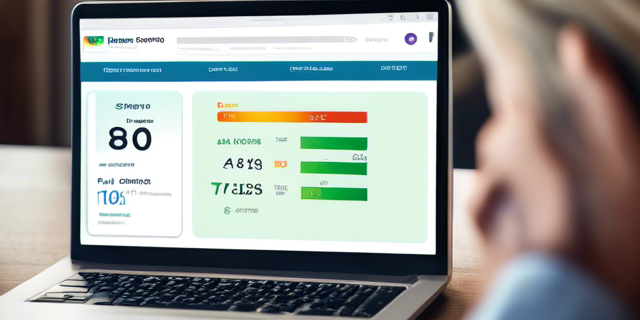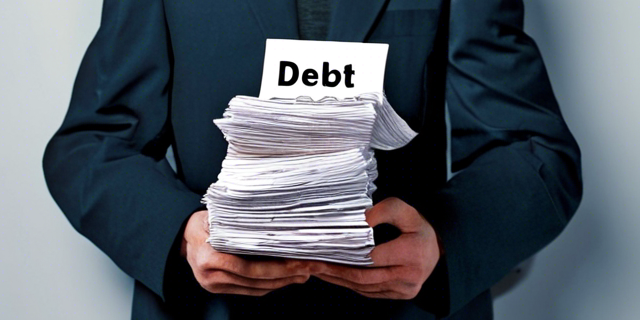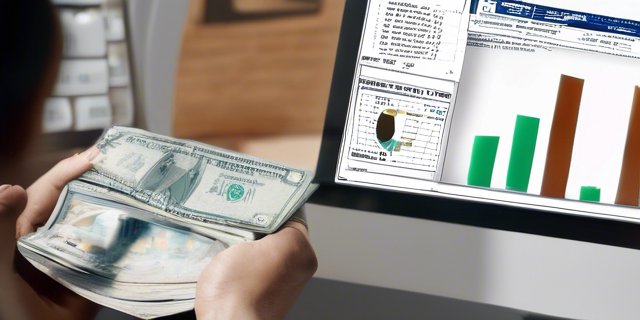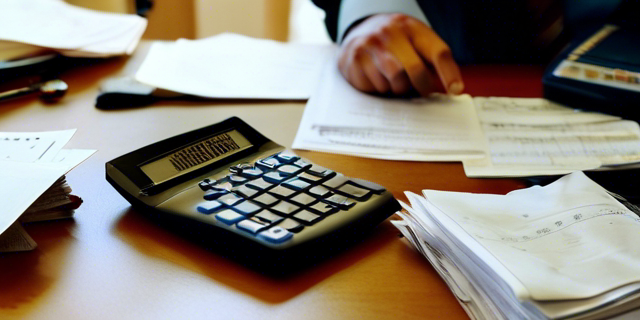Navigating Bankruptcy 2024: A Comprehensive Guide to Weathering the Storm

When the weight of overwhelming debt becomes too much to bear, the prospect of bankruptcy can loom like a dark cloud on the horizon. However, contrary to popular belief, bankruptcy is not a dead end but rather a legal process designed to provide a fresh start and a path towards financial recovery. In this comprehensive guide, we’ll demystify the complexities of bankruptcy, equipping you with the knowledge and strategies you need to navigate this challenging terrain with confidence and resilience.
Understanding the Fundamentals of Bankruptcy
Before we dive into the intricacies of bankruptcy, it’s essential to grasp its core principles and purpose. At its core, bankruptcy is a legal proceeding that allows individuals or businesses to restructure or eliminate their debts under the protection of federal bankruptcy courts. This process is governed by the U.S. Bankruptcy Code and overseen by the United States Trustee Program, a component of the Department of Justice.
Types of Personal Bankruptcy
When it comes to personal bankruptcy, there are two main types: Chapter 7 and Chapter 13. Understanding the differences between these two chapters is crucial in determining the most appropriate path for your specific financial situation.
Chapter 7 Bankruptcy: A Fresh Start
Chapter 7 bankruptcy, also known as a “straight bankruptcy,” is designed for individuals with limited income and few assets. This type of bankruptcy involves the liquidation of non-exempt assets to repay creditors, with any remaining eligible debts being discharged. This process typically takes four to six months from the time of filing.
Chapter 13 Bankruptcy: Reorganization and Repayment
Chapter 13 bankruptcy, often referred to as a “wage earner’s plan,” is geared towards individuals with a steady income who wish to keep their assets while reorganizing and repaying their debts over a period of three to five years. In this chapter, you’ll work with the court to establish a repayment plan based on your disposable income, allowing you to catch up on missed payments and keep your property.
The Decision to File for Bankruptcy

Deciding to file for bankruptcy is a significant financial decision that should not be taken lightly. Before embarking on this journey, it’s crucial to carefully evaluate your circumstances and explore all available alternatives. This may include negotiating with creditors, seeking credit counseling, or exploring debt consolidation options.
If you’ve exhausted all other avenues and bankruptcy appears to be the most viable solution, it’s essential to seek the guidance of a qualified bankruptcy attorney. These legal professionals can help you navigate the complexities of the bankruptcy process, ensuring that your rights are protected and that you comply with all necessary regulations.
Eligibility and Requirements for Bankruptcy
To file for bankruptcy, you must meet certain eligibility requirements. These include, but are not limited to:
- Completing credit counseling: Before filing for bankruptcy, you must complete a credit counseling course from an approved agency within 180 days of your filing date.
- Means testing: Depending on your income level and family size, you may need to pass a “means test” to determine your eligibility for Chapter 7 bankruptcy.
- Providing financial documentation: You’ll be required to provide detailed financial information, including income statements, tax returns, and a list of assets and liabilities.
It’s essential to gather all necessary documentation and follow the filing instructions meticulously to ensure a smooth and successful bankruptcy process.
The Bankruptcy Filing Process
Once you’ve determined your eligibility and chosen the appropriate bankruptcy chapter, the filing process begins. This process typically involves the following steps:
- Filing the bankruptcy petition: Your attorney will file the necessary paperwork, including the bankruptcy petition, schedules, and statements, with the appropriate bankruptcy court.
- The automatic stay: Upon filing, an automatic stay immediately goes into effect, temporarily preventing creditors from taking any further collection actions against you.
- The creditors’ meeting: Also known as the 341 meeting, this is an opportunity for the bankruptcy trustee and your creditors to ask you questions about your financial situation and the information provided in your bankruptcy filing.
- Asset liquidation (Chapter 7): If you’ve filed for Chapter 7 bankruptcy, the trustee will oversee the liquidation of any non-exempt assets to repay creditors.
- Repayment plan (Chapter 13): If you’ve filed for Chapter 13 bankruptcy, you’ll work with the trustee to establish a repayment plan based on your disposable income.
- Discharge of debts: Once you’ve completed the required steps, eligible debts will be discharged, providing you with a fresh start.
Throughout this process, it’s essential to remain transparent, comply with all court orders and instructions, and maintain open communication with your bankruptcy attorney.
The Impact of Bankruptcy on Your Credit
One of the most significant concerns surrounding bankruptcy is its impact on your credit score and creditworthiness. While it’s true that bankruptcy can have a substantial negative impact on your credit score, it’s important to understand the nuances and long-term implications.
The Initial Hit to Your Credit Score
When you file for bankruptcy, your credit score will take an immediate hit, potentially dropping by as much as 200 points or more. This drop is a reflection of the significant derogatory entry that bankruptcy represents on your credit report.
The Rebuilding Process
However, the impact of bankruptcy on your credit score is not permanent. Once the bankruptcy is discharged and you begin rebuilding your credit history, your score will gradually improve over time. This process can take several years, but by adopting sound financial practices and consistently making on-time payments, you can steadily rebuild your creditworthiness.
The Importance of Credit Monitoring

During and after the bankruptcy process, it’s essential to monitor your credit reports closely. Ensure that the bankruptcy is accurately reported and that any errors or inaccuracies are promptly addressed through the credit dispute process. This vigilance will help you maintain control over your credit profile and track your progress towards financial recovery.
Alternatives to Bankruptcy
While bankruptcy can provide a fresh start and a path towards debt relief, it’s important to explore all available alternatives before taking this significant step. Some alternatives to consider include:
Debt Consolidation Loans
By consolidating multiple debts into a single loan with a lower interest rate, you may be able to manage your repayments more effectively and reduce the overall interest costs.
Debt Settlement
In some cases, you may be able to negotiate with creditors to settle your debts for a lump sum that is less than the total amount owed. However, this option can have a significant negative impact on your credit score.
Credit Counseling
Working with a reputable credit counseling agency can provide valuable guidance and support in developing a personalized debt management plan. These agencies may also be able to negotiate with creditors on your behalf to reduce interest rates and establish more manageable payment plans.
Debt Management Plans
Similar to credit counseling, debt management plans involve working with a credit counseling agency to consolidate your debts and establish a structured repayment plan. This option can help you avoid bankruptcy while maintaining a consistent payment history.
Loan Modifications or Forbearance
If you’re struggling with mortgage payments or student loan debt, you may be able to negotiate loan modifications or temporary forbearance agreements with your lenders. These options can provide short-term relief while you work towards a more permanent solution.
It’s important to carefully evaluate each alternative and seek professional guidance to determine the most appropriate course of action for your specific financial situation.
Life After Bankruptcy: Rebuilding Your Financial Future
While bankruptcy can provide a fresh start, it’s important to understand that the road to financial recovery requires commitment, discipline, and a willingness to learn from past mistakes. Here are some strategies to help you rebuild your financial future after bankruptcy:
Develop a Solid Budget and Financial Plan
Creating a realistic budget and sticking to it is crucial for regaining control over your finances. Identify areas where you can cut back on expenses and allocate funds towards savings and debt repayment. Consider seeking the guidance of a financial advisor or counselor to develop a comprehensive financial plan tailored to your specific goals and circumstances.
Rebuild Your Credit Profile
After bankruptcy, rebuilding your credit profile is essential for accessing future credit opportunities and improving your overall financial standing. This process may involve obtaining a secured credit card, becoming an authorized user on someone else’s credit card, or applying for a credit-builder loan. Consistently making on-time payments and maintaining a low credit utilization ratio will help you gradually improve your credit score over time.
Establish an Emergency Fund
One of the keys to preventing future financial crises is establishing an emergency fund. Aim to save enough to cover at least three to six months’ worth of living expenses. This financial cushion can help you weather unexpected expenses or temporary setbacks without relying on credit or accumulating additional debt.
Consider Credit Counseling and Financial Education
Seeking guidance from reputable credit counseling agencies and participating in financial education programs can provide valuable insights and tools to help you develop healthy financial habits. These resources can empower you to make informed decisions and avoid the pitfalls that led to your previous financial struggles.
Be Patient and Persistent
Rebuilding your financial life after bankruptcy is a journey that requires patience and persistence. It may take several years to fully restore your creditworthiness and achieve your financial goals, but with unwavering dedication and a commitment to sound financial practices, you can emerge from this experience stronger and better equipped to navigate the complexities of personal finance.
Conclusion
Navigating bankruptcy can be a daunting and emotionally challenging experience, but it’s important to remember that it is not a dead end. By understanding the legal framework, exploring alternatives, and developing a comprehensive strategy for financial recovery, you can weather this storm and emerge stronger and more resilient than ever before.
Throughout this journey, seek the guidance of qualified professionals, remain transparent and compliant with all legal requirements, and maintain a positive and proactive mindset. While the road ahead may be challenging, the reward of financial freedom and a fresh start is well worth the effort.
Remember, bankruptcy is not a failure but rather a tool designed to provide a path towards a brighter financial future. Embrace this opportunity, learn from your experiences, and emerge as a wiser and more financially savvy individual, ready to embark on a new chapter of financial stability and prosperity.
FAQs: Navigating Bankruptcy 2024
1. Can I file for bankruptcy more than once?
Yes, it is possible to file for bankruptcy more than once, but there are specific time limitations and restrictions in place. For Chapter 7 bankruptcy, you must wait eight years before filing again. For Chapter 13 bankruptcy, the waiting period is two years if your previous case was dismissed, or four years if your previous case was completed and debts were discharged.
2. Will bankruptcy eliminate all of my debts?
No, bankruptcy does not eliminate all types of debts. Certain debts, such as child support obligations, most student loans, and some tax debts, are generally not dischargeable in bankruptcy. It’s important to consult with a bankruptcy attorney to understand which debts will and will not be eliminated through the bankruptcy process.
3. Can I keep my house or car if I file for bankruptcy?
In many cases, you may be able to keep your house or car when filing for bankruptcy, particularly if you are current on your mortgage or vehicle loan payments. However, the specifics will depend on the type of bankruptcy you file, the amount of equity you have in the property, and the applicable exemption laws in your state.
4. How long does the bankruptcy process typically take?
The duration of the bankruptcy process can vary depending on the specific chapter you file and the complexity of your case. Generally, Chapter 7 bankruptcy cases can be completed in four to six months, while Chapter 13 bankruptcy cases can last three to five years, as you work to fulfill your repayment plan.
5. Will my spouse’s credit be affected if I file for bankruptcy?
If you file for bankruptcy as an individual, your spouse’s credit will not be directly affected, provided that they are not jointly responsible for the debts included in the bankruptcy filing. However, if you have jointly held accounts or debts, those accounts may be impacted by your bankruptcy filing, potentially affecting your spouse’s credit as well.









